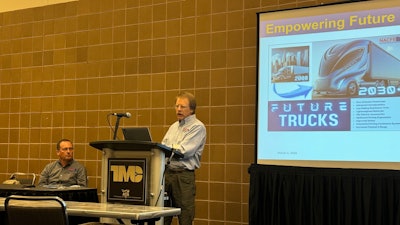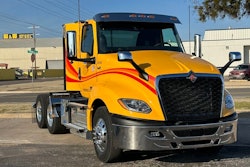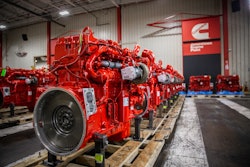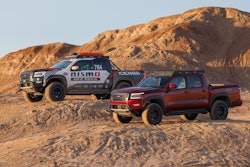
SuperTrucks aren't on the lot yet, North American Council on Freight Efficiency Executive Director Mike Roeth says, but there's a piece of the program in every new model year that rolls out.
The SuperTruck initiative began in 2009 with a goal of developing and demonstrating a 50% improvement in freight efficiency from that year's baseline. Of that, 40% must come from engine technologies which must demonstrate a 50% thermal efficiency engine, and 60% must come from vehicle system technologies. Funding from SuperTruck comes in part from the U.S. Department of Energy.
Rick Mihelic, NACFE's director of emerging technologies, says the SuperTruck program represents 10 years worth of innovation in American trucking. Mihelic and Roeth both worked on initial SuperTruck proposals, Roeth says.
"These are not blue sky projects with research money going in just for the sake of research," Mihelic told a press conference Sunday at the American Trucking Association's Technology & Maintenance Council meeting. Technology in the SuperTruck program must have a path to production, Mihelic says, and many of the innovations in newer models of tractors are courtesy of the program.
"SuperTruck is giving you a menu of a lot of new technologies," Mihelic says. The program encourages OEMs to thing creatively and dust off ideas they haven't been able to work on by themselves.
"They're able to look at stuff that's been on the back shelf at some of these companies that, by itself, wasn't interesting to look at," he says. "These vehicles are system perspectives. They are tractor trailers as a complete system." And that provides OEMs with an opportunity to really look at how tractors work with trailers to haul freight.
One thing SuperTruck has shown, Roeth says, is that diesel still has a lot to offer in terms of efficient hauling.
"One of the things that SuperTruck showed was there's still opportunity to make the little incremental changes," Roeth says. "It frustrates us at NACFE and me in particular that decarbonization has to be battery electric. We should be proud. There's been an incredible amount of effort to get these levels."
[RELATED: Bringing hydrogen to trucking will be 'marathon, not a sprint']
Roeth also discussed NACFE's Run on Less Electric DEPOT event, which featured 10 fleet depots with 15 or more Class 3 to Class 8 battery electric vehicles in the U.S. and Mexico. Roeth says NACFE visited the White House on Nov. 7 to present what they learned during the run. It was four and a half hours of "pragmatic, real world discussion about electric trucks," he says, including difficulties with charging and infrastructure.
"It's just taking too damn long to get the electricity at the sites," Roeth says. NACFE will have two more reports on what they learned during the run out this spring.












